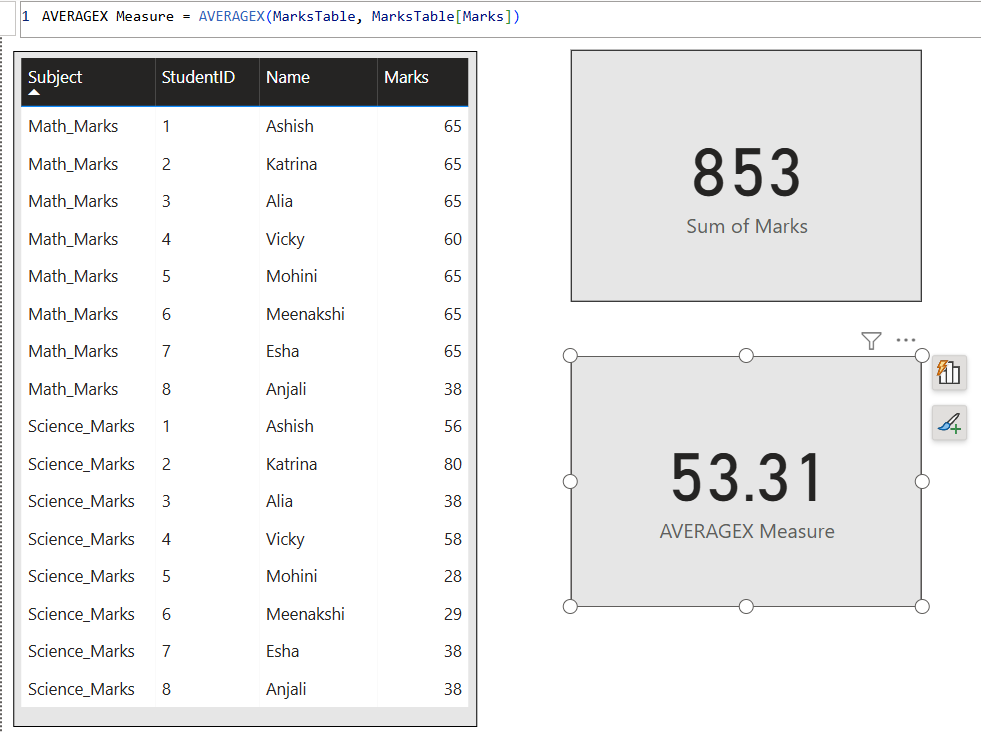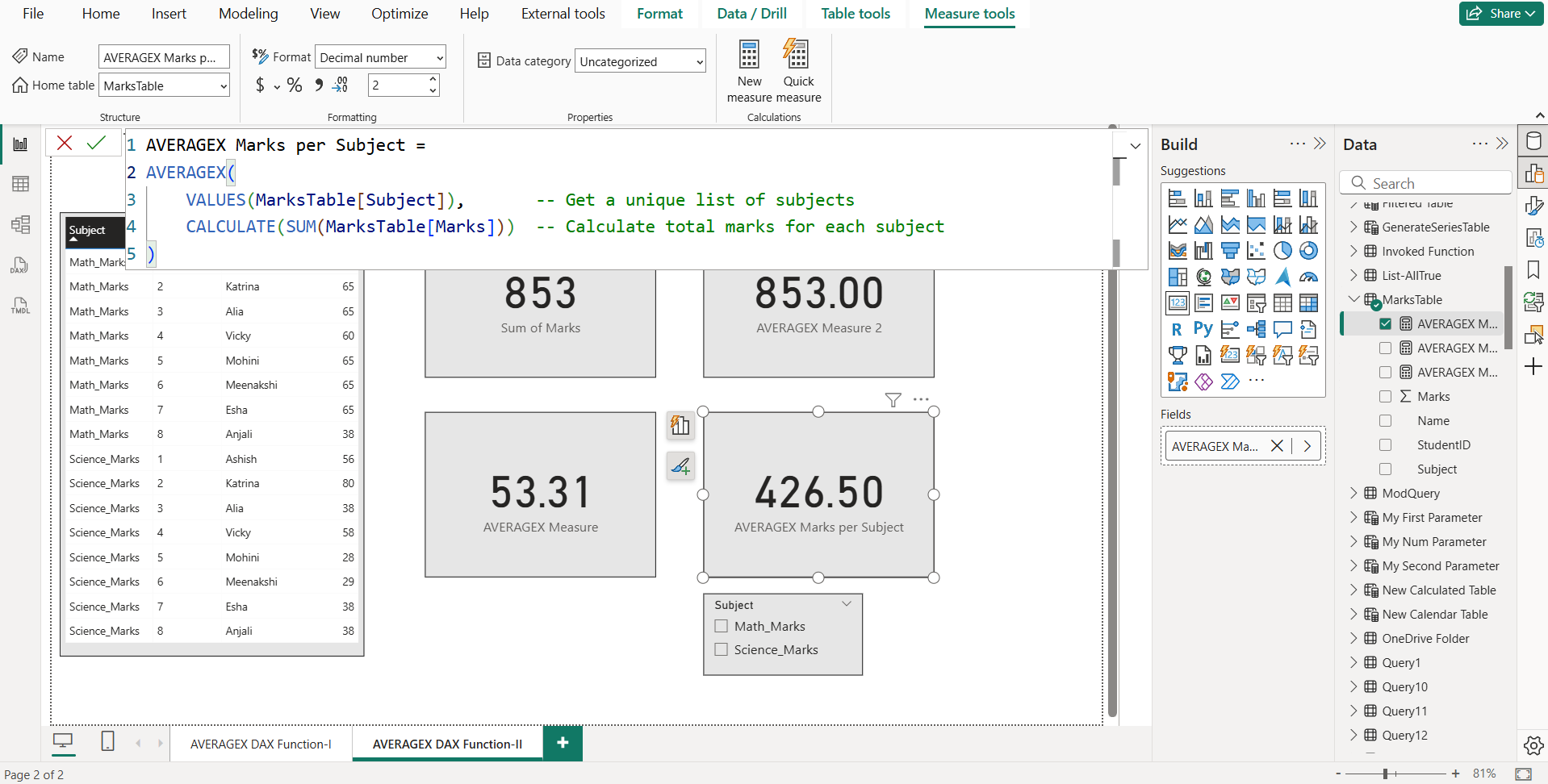AVERAGEX DAX Function in Power BI
The AVERAGEX DAX function evaluates an expression row by row over a table and returns the average (arithmetic mean) of those values.
DAX Syntax AVERAGEX(table, expression)
The function has the following parameters:
- table: It specifies the name of a table, or an expression over which the aggregation can be performed.
- expression: An expression with a scalar result, which will be evaluated for each row of the table in the first argument.
Example: Basic AVERAGEX with a calculated value.
DAX
AVERAGEX Measure =
AVERAGEX(
MarksTable, -- Table to iterate over
MarksTable[Marks] -- Expression to evaluate and average
) This is like AVERAGE(MarksTable[Marks]). The output of the above code is shown below:

Example: Average Marks per Subject Category.
To calculate the average of total marks, but per Subject category.
DAX
AVERAGEX Marks per Subject =
AVERAGEX(
VALUES(MarksTable[Subject]), -- Get a unique list of subjects
CALCULATE(SUM(MarksTable[Marks])) -- Calculate total marks for each subject
) The output of the above code is shown in the image below:

Explanation:
- VALUES(MarksTable[Subject]): Returns a list of distinct subjects. The VALUES function respects the current filter context.
- For each subject, it calculates total marks and then averages those totals using
AVERAGEX.
Goal of this DAX: Find the average of total marks per subject.
- Get all unique subjects.
- For each subject, calculate the total marks scored.
- Average those subject totals.
Step-by-Step Backend Breakdown:
Step 1: VALUES(MarksTable[Subject])
- Creates a virtual table with distinct subjects.
- Example result:
- Science_Marks
- Math_Marks
AVERAGEXwill now iterate row-by-row over this list.
Step 2: AVERAGEX Iterator Starts
- Loops through the virtual table.
- For each subject, it calculates:
CALCULATE(SUM(MarksTable[Marks]))
Step 3: CALCULATE(...) Converts Row Context → Filter Context
- First iteration: Subject = "Science_Marks"
- Applies filter where Subject = Science_Marks.
- SUM of Marks = 365
- Second iteration: Subject = "Math_Marks"
- Applies filter where Subject = Math_Marks.
- SUM of Marks = 488
Step 4: AVERAGEX Averages These Totals
- Total for Science_Marks = 365
- Total for Math_Marks = 488
- Average = (365 + 488) / 2 = 426.5
Behind the Scenes: Row Context vs Filter Context
- Row context: Happens while iterating over rows (like inside
AVERAGEX). - Filter context: Filters applied to the model (via visuals or
CALCULATE). CALCULATEbridges the gap by converting row context into filter context so that SUM only considers rows for the current subject.
Alternative with Measure:
Instead of using CALCULATE, create a measure (measures inherently work in filter context):
DAX
The above measure can be used in our calculation.
DAX
AVERAGEX Marks per Subject =
AVERAGEX(
VALUES(MarksTable[Subject]), -- Get a unique list of subjects
[Total Marks Measure] -- Calculate total marks for each subject
)